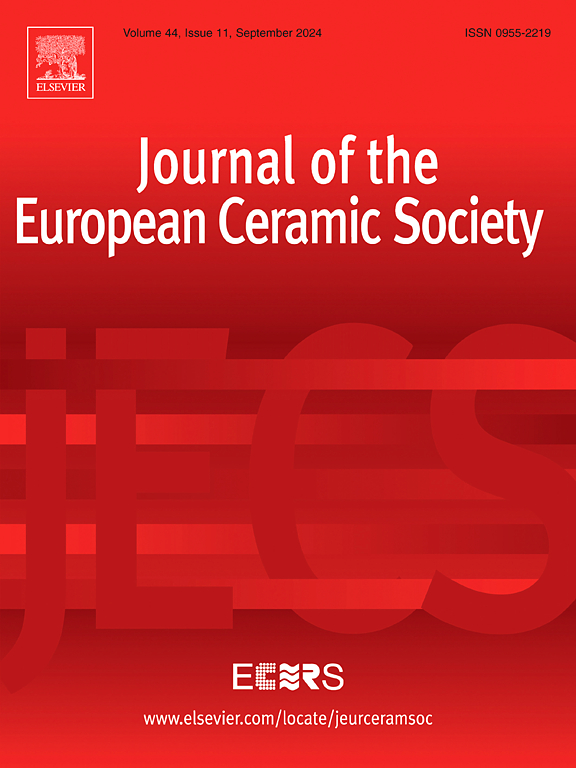High-pressure sintered polycrystals from Ti-coated cBN powders: Microstructure, mechanical properties and thermo-electrical characteristics
IF 5.8
2区 材料科学
Q1 MATERIALS SCIENCE, CERAMICS
Journal of The European Ceramic Society
Pub Date : 2025-03-24
DOI:10.1016/j.jeurceramsoc.2025.117393
引用次数: 0
Abstract
Three grades of Ti-coated cubic boron nitride (cBN) powders, varying in grain size and coating thickness, were used to create high-pressure, high-temperature (HPHT) sintered polycrystalline materials (PcBN) without addition of bonding phases. The resulting pore-free composites exhibited a Young's modulus of 620–850 GPa and Knoop hardness between 22 and 29 GPa. The composites consist of cBN grains uniformly surrounded by titanium compounds, mainly TiN and TiB2, initially formed during the coating process and then crystalized during HPHT sintering, due to due to the high reactivity of titanium with cBN. Impedance spectroscopy and laser flash analysis indicated that microstructure of composites significantly influences their electrical and thermal conductivities, with notable temperature-dependent changes. These composites can be considered promising for advanced cutting tools, particularly in developing smart tools that can self-diagnose wear based on electrical property changes during cutting.
求助全文
约1分钟内获得全文
求助全文
来源期刊

Journal of The European Ceramic Society
工程技术-材料科学:硅酸盐
CiteScore
10.70
自引率
12.30%
发文量
863
审稿时长
35 days
期刊介绍:
The Journal of the European Ceramic Society publishes the results of original research and reviews relating to ceramic materials. Papers of either an experimental or theoretical character will be welcomed on a fully international basis. The emphasis is on novel generic science concerning the relationships between processing, microstructure and properties of polycrystalline ceramics consolidated at high temperature. Papers may relate to any of the conventional categories of ceramic: structural, functional, traditional or composite. The central objective is to sustain a high standard of research quality by means of appropriate reviewing procedures.
 求助内容:
求助内容: 应助结果提醒方式:
应助结果提醒方式:


